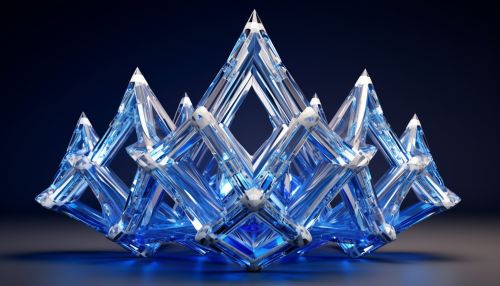Time crystal
Introduction
A time crystal is a phase of matter that was first proposed by Nobel laureate Frank Wilczek in 2012. Unlike conventional phases of matter such as solids, liquids, and gases, time crystals exhibit a phenomenon known as time-translation symmetry breaking, a unique property that has intrigued scientists and researchers worldwide.
Concept and Theoretical Background
The concept of time crystals stems from the field of quantum mechanics, a branch of physics that deals with phenomena on a very small scale, such as molecules, atoms, and subatomic particles. In quantum mechanics, the behavior of these particles is described by wave functions, mathematical functions that give the probabilities of the outcomes of experiments.
The idea of time crystals was proposed by Frank Wilczek while he was exploring the possibility of time-translation symmetry breaking in quantum systems. In physics, symmetries are described by mathematical operations that can be applied to a system without changing its basic properties. For example, a round ball has rotational symmetry because it looks the same no matter how you rotate it.
Time-translation symmetry is a type of symmetry in which the laws of physics are the same at all times. Breaking this symmetry would mean that there are certain times at which the laws of physics change. This is where time crystals come in. They are a theoretical phase of matter that breaks time-translation symmetry.


Properties of Time Crystals
Time crystals are unique in that they exhibit a phenomenon known as time-translation symmetry breaking. This means that they oscillate between different states without using any energy. This is in contrast to normal crystals, which exhibit a repeating pattern in space and are in a state of lowest energy, or ground state.
The oscillations in a time crystal occur at a frequency that is an integer multiple of the frequency of a driving force that is applied to the crystal. This phenomenon is known as subharmonic oscillation and is one of the key characteristics of time crystals.
Another interesting property of time crystals is that they cannot be in thermal equilibrium. This is because they are driven systems, meaning they require an external force to maintain their oscillations. If a time crystal were to reach thermal equilibrium, the oscillations would cease, and it would no longer be a time crystal.
Experimental Observations
Despite the theoretical challenges and initial skepticism in the scientific community, experimental evidence for time crystals has been reported. In 2016, a team of researchers at the University of Maryland claimed to have created a time crystal using a chain of ytterbium ions. The ions were hit with a laser to create an effective magnetic field, and another laser was used to partially flip the spins of the ions, causing them to oscillate.
In 2021, Google's Quantum AI team reported that they had observed time-translation symmetry breaking in a chain of qubits, the basic units of information in quantum computing. The researchers applied a sequence of pulses to the qubits and observed that they oscillated at half the frequency of the pulses, a signature of time-translation symmetry breaking and a characteristic of time crystals.
Implications and Future Research
The discovery of time crystals has opened up a new field of research in quantum physics. It has potential implications for the development of quantum computers, which could use time crystals to maintain qubits in a state of superposition without using energy.
However, much is still unknown about time crystals. Future research will focus on understanding their properties more fully, exploring their potential applications, and resolving the theoretical challenges associated with them.
